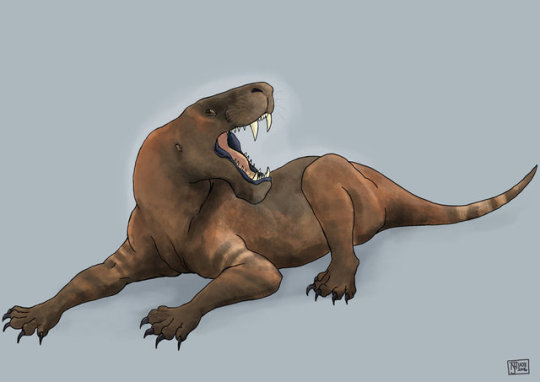#sauroctonus
Text
Hello my children today I bring to you the different gorgonops species. Praise be to the father of the fang.
Now repeat after me.
Scylacognathus
Scylacognathus grimbeeki,
Scylacognathus major
Scylacognathus parvus
Scylacognathus robustus
Paragalerhinus
Paragalerhinus rubidgei.
Aelurognathus
Aelurognathus parringtoni.
Aelurognathus tigriceps.
Aelurognathus ferox.
Aelurosaurus
Aelurosaurus whaitsi.
Aelurosaurus felinus.
Aelurosaurus wilmanae.
Aloposaurus
A. gracilis
Arctognathus
The recognized A. curvimola A. breviceps and the unrecognized A. cookei and A. nasuta.
Arctops
Arctops ferox.
Broomisaurus
Broomisaurus planiceps.
Broomisaurus rubidgei.
Clelandina
Clelandina laticeps.
Clelandina rubigei.
Cyonosaurus
Cyonosaurus longiceps.
Cyonosaurus kitchingi
Cyonosaurus broomianus
Cyonosaurus rubidgei
Cyonosaurus tenuirostris
Dinogorgon
Dinogorgon rubidgei
Eoarctops
Eoarctops sp.
Eoarctops vanderbyli.
Leontocephalus
Leontocephalus rubidgei.
Leontocephalus intactus.
Lycaenops
Lycaenops kingwilli.
Lycaenops angusticeps.
Lycaenops ornatus.
Sycosaurus
Sycosaurus brodiei.
Sycosaurus intactus.
Sycosaurus vanderhorsti.
Sycosaurus kingoriensis.
Sycosaurus laticeps.
Galesuchus
Viatkogorgon
Viatkogorgon ivakhnenkoi
Inostrancevia
Inostrancevia alexandrI
Inostrancevia latifrons
Inostrancevia uralensis
Pravoslavlevia
Pravoslavlevia parva
Broomicephalus
Prorubidgea
Prorubidgea robusta.
Prorubidgea maccabei.
Rubidge
Rubidgea atrox.
Scylacops
Scylacops bigendens.
Scylacops capensis.
Sauroctonus
Sauroctonus progressus
Sauroctonus parringtoni
Sauroctonus
Gorgonops torvus
Gorgonops whaitsi
Gorgonops longifrons
Gorgonops eupachygnathus
Gorgonops dixeyi
And Gorgonops kaiseri.
Amen, praise the fanged one my children go out and feast.
4 notes
·
View notes
Text
Experiments in Shrink-Wrapping
There was some recent discussion on the Palaeoblr Discord server about the ridiculous amounts of “shrink-wrapping” that a lot of prehistoric animals get in palaeoart.
A QUICK EXPLANATION:
For those of you who don’t know, shrink-wrapping is a word used in palaeoart to refer to a reconstruction where the skin of an animal is shown basically clinging to the skull or the skeleton, as if it has been shrink-wrapped onto the animal. Here’s a good example of shrink-wrapping in modern palaeoart:
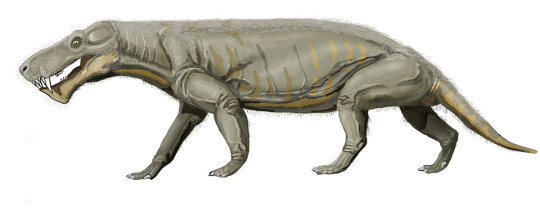
[source]
Although this is a fairly tame example, the shrink-wrapping is still visible. See how the skin traces around every hole and dimple in the skull, the teeth are exposed and you can see the outlines of the shoulderblade, backbone and hips? That’s shrink-wrapping. In real life, these bones were probably covered in muscle and fat, like in most modern animals.
OKAY, BACK TO THE STORY:
So, in the light of this rampant shrink-wrapping epidemic, fellow palaeoblr artist @cheetahtrout decided to take suggestions for animals to “un-shrink-wrap”, restoring them with a proper amount of muscle and fat. I joined in, and we both drew the same animal, then compared the results.
First up, we drew Titanophoneus, a large predatory synapsid, based on this skeletal diagram. I gave it a big, thick neck and some powerful jaw muscles, filling out the shape of the head. I also covered up the teeth with some nice thick lips, to protect them from drying out. If you look, you’ll notice that most modern mammals have lips covering their teeth, even animals like hippos and baboons, which have enormous teeth for their size.

The other challenge was the gorgonopsid Sauroctonus. The reference was this skeletal diagram. Gorgonopsids are very often shrinkwrapped in palaeoart, usually to make them appear more menacing, as they were the apex predators of their time. The shrinkwrapped example I showed at the start of this post is also a gorgonopsid. @ridiculouslyphotogenicsinosaurus joined in on this one.
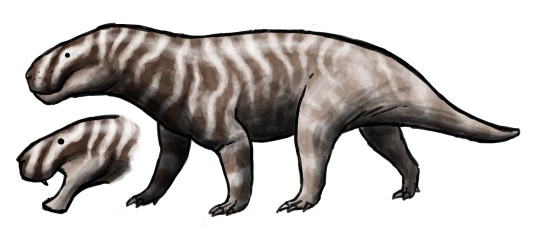
And here it is! Compare this Sauroctonus to the gorgonopsid at the start, and you should be able to see some key differences. This guy has a lot more bulk to him, since in modern animals the shape of the skeleton is often covered up with muscle, skin, and fat. Gorgonopsids were most likely built for power rather than speed, so they would have been quite thick and muscular.

The other main difference is in the mouth. I’ve drawn an open mouth for this guy as well to make it easier to tell what’s going on. The lips droop down and cover the teeth when the mouth is closed, and when it’s open you can see that the actual mouth does not go all the way back to the edge of the jaw like it does in many shrink-wrapped restorations.
After all that I though I should try taking the idea of ‘anti-shrink-wrapping’ to its extreme. And so, I proudly present to you ... the Bullet Man

#art#palaeoart#shrink wrapping#synapsids#titanophoneus#gorgonopsid#sauroctonus#palaeoblr#just to be clear these are not dinosaurs
6K notes
·
View notes
Text
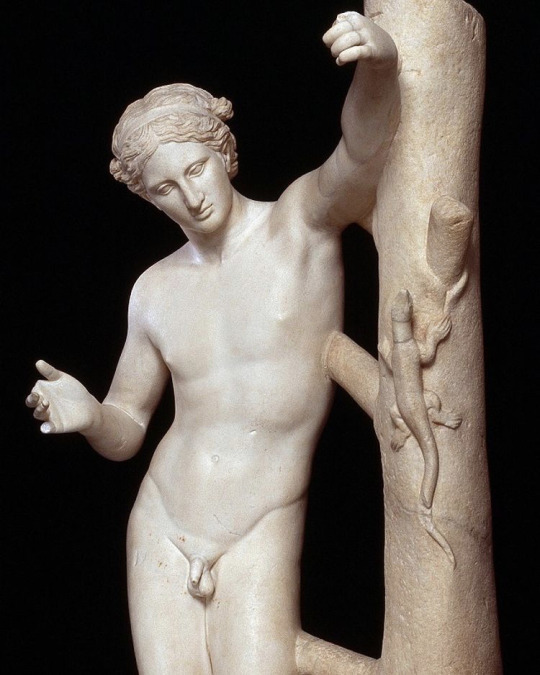
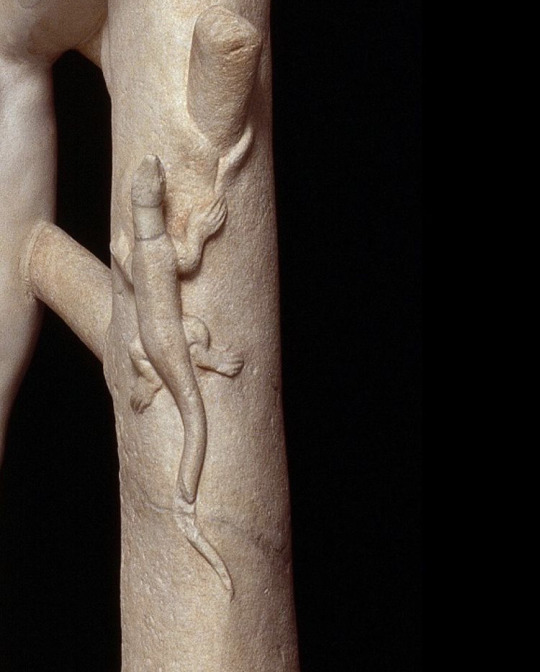

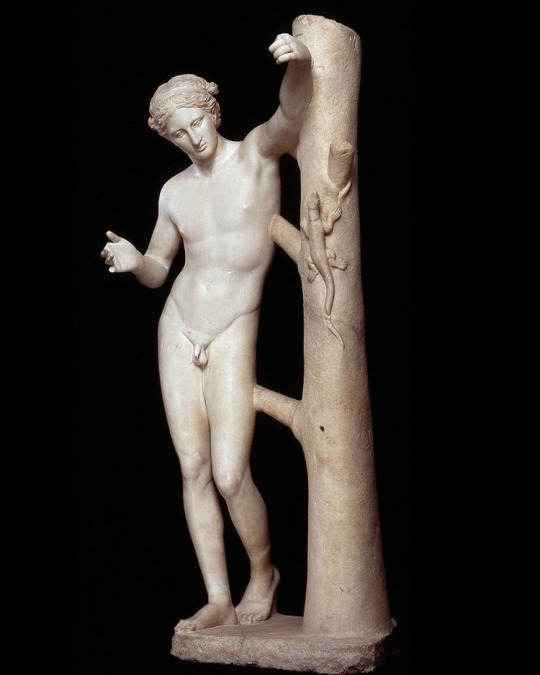

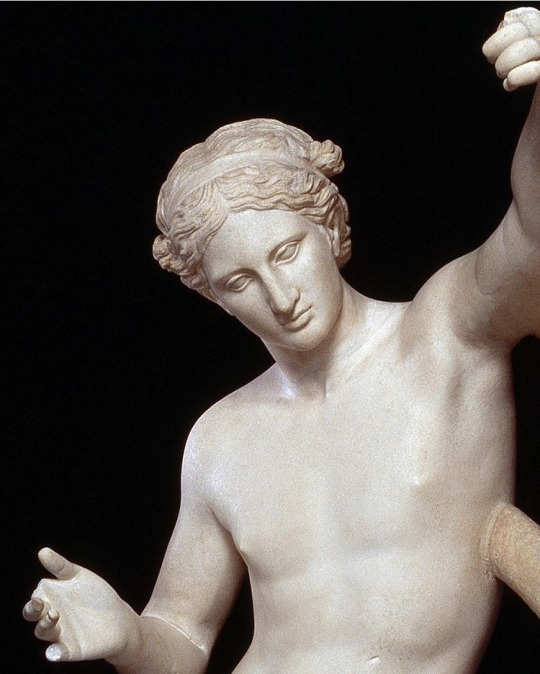
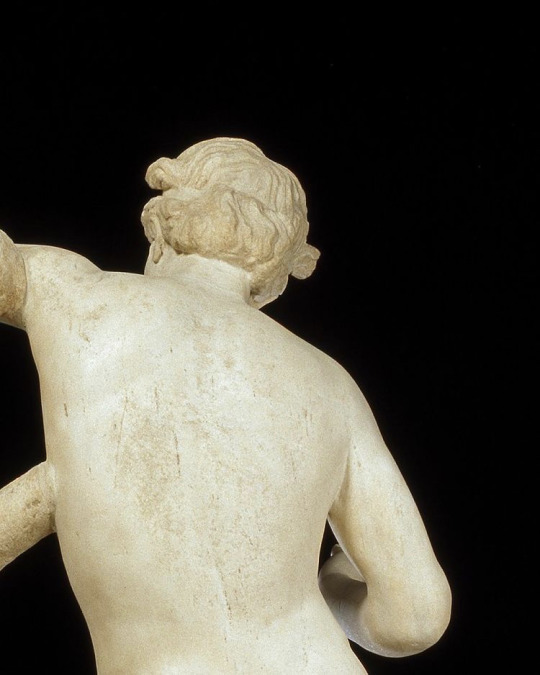
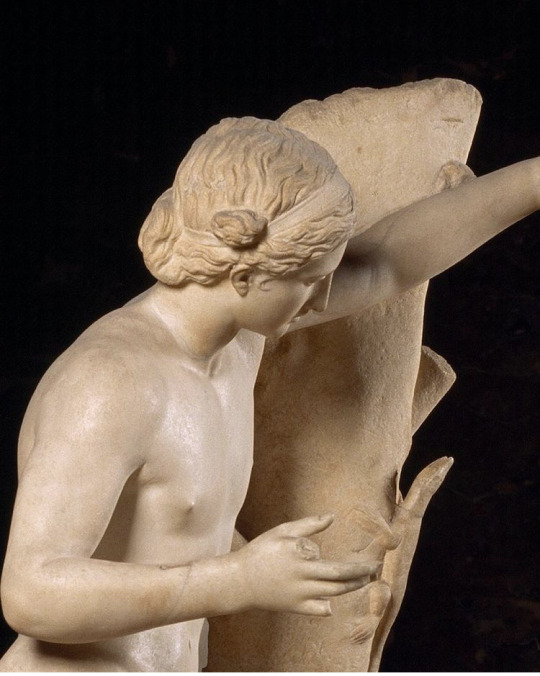
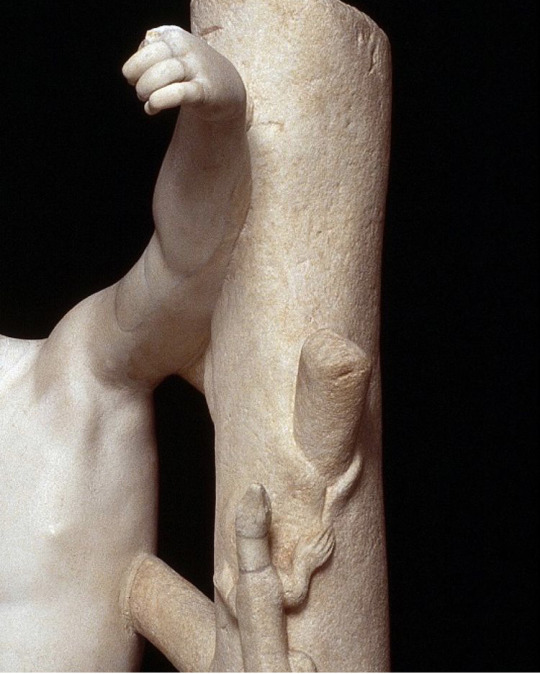
The Apollo Sauroctonus ( Lizard slayer in Greek) by Praxiteles. Louvre, Paris.
242 notes
·
View notes
Text

Zdeněk Burian (Czech, 1905-1981) - Scutosaurus and Sauroctonus (1966)
125 notes
·
View notes
Text



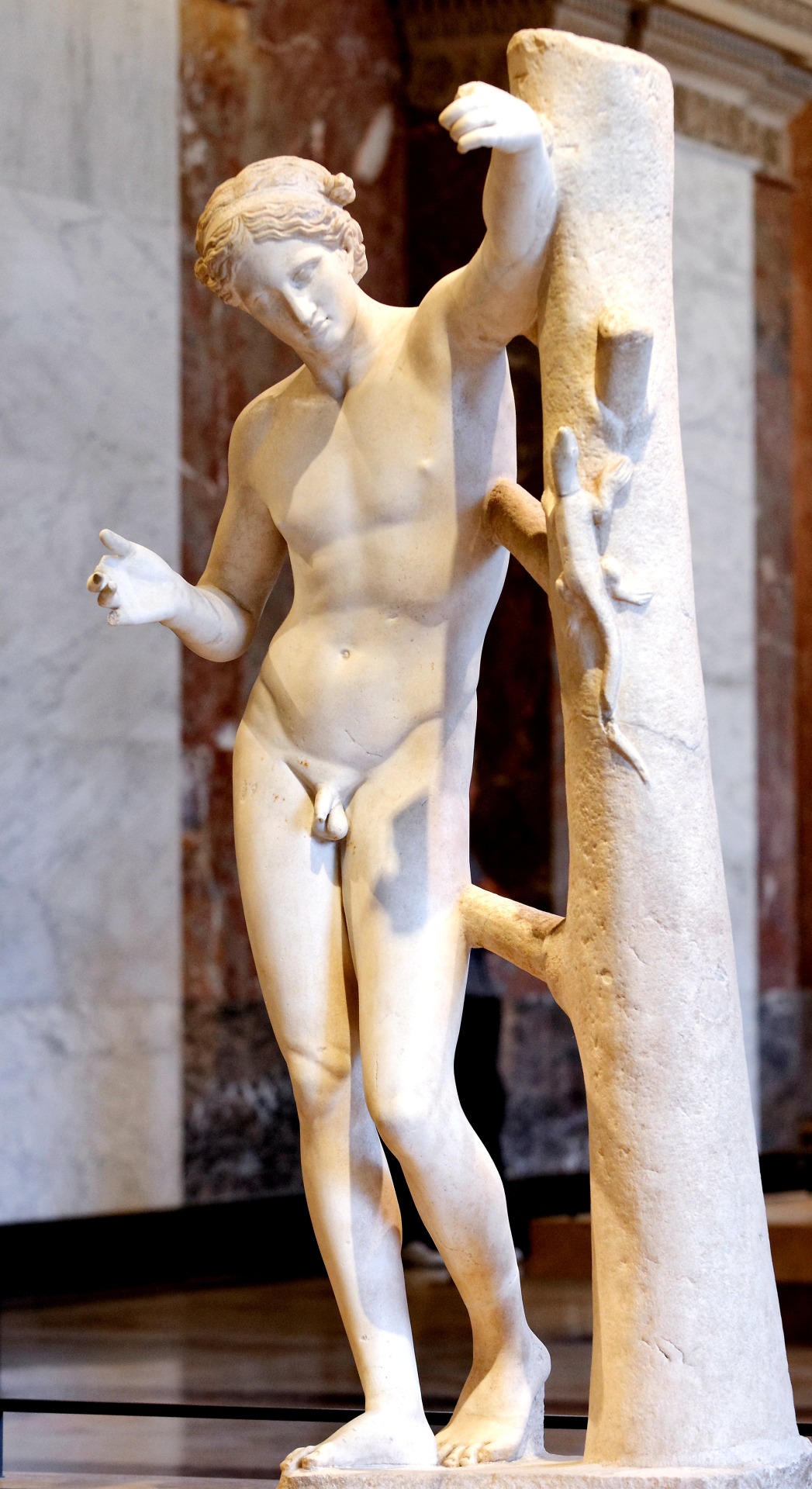
Apollo Sauroctonos
Roman copy after a bronze original ca. 350 BCE by Praxiteles.
Apollo is depicted as a youth, totally absorbed in his childish game, hunting a lizard. The youthful god, his gaze vacant, is nonchalantly leaning against a tree trunk, preparing to grab the lizard climbing up it with his left hand and strike it with an arrow held in his right hand.
All of Praxiteles' works, the Apollo Sauroctonus in particular, are strikingly bold in style, departing from the classical tradition of the 5th century BC. The subject allowed Praxiteles to develop one of his favorite themes-a young male nude with a graceful, almost feminine body and sharply defined hips.
The work is thought to refer to the purifying virtues of Apollo, who defeated evil creatures and destroyed scourges.
(Louvre Museum.)
632 notes
·
View notes
Note
How smart were gorgonopsians such as Inostrancevia and Sauroctonus?
Certainly not as smart as any modern mammal. Gorgonopsian braincases (such as this one) are more like those of more basal amniotes. For example, the hindbrain is larger than the forebrain - not a sign of particularly high intelligence. This is also the case for dicynodonts and therocephalians. The increase in EQ and neocortex size to the level we see in mammals only happened in cynodonts.
13 notes
·
View notes
Photo

Apollo Sauroctonus (lizard-killer), Roman copy from the 1st–2nd centuries AD after a Greek original from the 4th century BC. (Musée du Louvre.)
0 notes
Text
Tabla Cronológico
Cómo utilizar esta tabla.
Esta tabla Cronológico muestra algunos de los animales que vivieron entrega 570 y 65 millones de años atrás.
Comienza con los animales más antiguos por la parte inferior de la página y va subiendo hasta los animales más recientes.
La tabla comienza por abajo,pues este es el modo en que los paleontólogos encuentran los fósiles.
Los más antiguos están en las capas más profundas de rocas con los fósiles nuevos arriban.
En la parte izquierdad están las fechas en las que vivieron los animales y los nombres de los fechas en la nombres de los distintos periodos de la prehistoria.
Tabla Cronológico.
65 millones de años — Cretácico
Esponjas
Medusas
Lirio de mar
Coral
Amonitas
Cucaracha
Plesiosaurios
Pliosaurios
Letiosaurios
Corythosaurus
Parasaurolophus
136 millón de años — Jurásico
Esponjas
Medusas
Lirio de mar
Coral
Amonitas
Cucaracha
Plesiosaurios
Pliosaurios
Letiosaurios
190 millones —- Triásico
Esponjas
Medusas
Lirio de Mar
Coral
Amonitas
Cucaracha
Plesiosaurios
Letiosaurios
Sauroctonus
225 millones de años —– Permico
Esponja Medusas Lirio de mar Coral Cucaracha Diadectes Edafosaurus Millerosaurus 280 millones de años --- Carbonifero Triolobites Esponjas Medusas Liriode mar Coral Cucarachas Meganeura Anfibios 345 millones de años ---- Debonico Trilobites Esponjas Medusas Lirios de mar Coral Ostracodermos Escopiones de mar Eusthenopteron Ichthyostega 400 millones de años --- Silurico Trilobites Medusa Esponjas Lirios de mar Escorpiones de mar Coral Primeras plantas de tierra Ostracodermos Primer pez 440 millones de años --- Ordoviciense Trilobites Esponjas Medusas Lirios de mar Coral Ostracodermos 500 millones de años ---- Cabrico Trilobites Medusa Lirios de mar Coral
0 notes
Photo
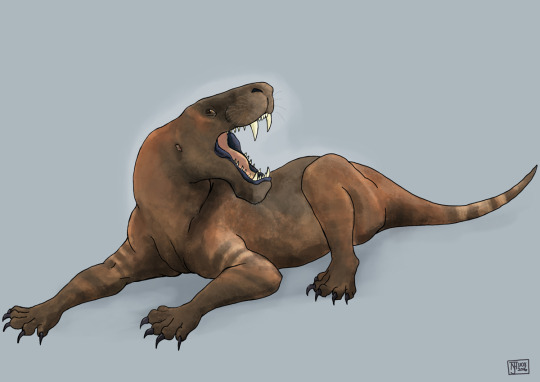
Sauroctonus progressus
Extinct Late Permian
110 notes
·
View notes
Photo

Scutosaurus and Sauroctonus by Zdeněk Burian
27 notes
·
View notes
